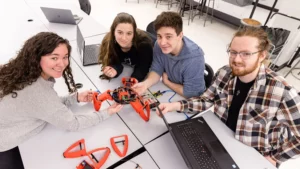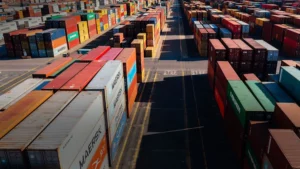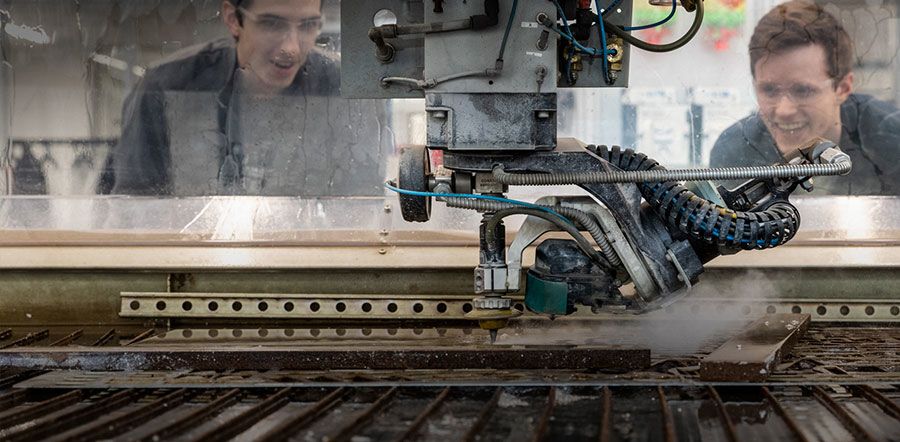Innovations Shaping the Backbone of Modern Society
Have you ever stopped to wonder what keeps the world humming? What makes society tick? Drives the economy? If having humanity’s knowledge base in the palm of our hands, access to advanced health care technologies, and the ride under the Hudson River to the financial capital
Harvesting the Toxic Blooms of Summer
In the 21st century, demand for engineering innovation in every facet of our lives is multiplying. Wen Zhang, environmental engineer and director of NJIT’s Sustainable Environmental Nanotechnology and Nanointerfaces Laboratory, has been working with a team of biologists, engineers, and entrepreneurs on a new plan of attack to fight the micrometer-sized invasion using nanobubble technology.
Nanobubbles are widely useful. Suspended in liquids, they have a high degree of stability against dissolution and collapse.
Their large surface area and random movements allow them to move nutrients around to enhance plant growth, disinfect bacteria, and aerate hypoxic environments.
With successful prototyping and testing demonstrating its success, Zhang’s technology has been licensed by the startup PureNanoTech Inc. through NJIT’s entrepreneurial incubator, the New Jersey Innovation Institute.
Engineering the Economy: Nanobubble technology is being used to improve the food and plant growth industries as well. As natural resources—water and space—become strained, controlled environmental agriculture offers an energy-efficient, ecologically conscious process with nanobubble technology believed to improve plant growth and crop yields in soil-based and hydroponic systems.


Keeping the Trains on the Tracks
Engineering the Economy: Engineering the Economy: Innovations Shaping the Backbone of Modern Society “We need to rethink what it means to be resilient. “But to do so, the whole system needs to work together.
With collaborators at Rutgers and Princeton, Boufadel has developed a Community Intrinsic Resilience Index (CIRI) that will help cities and regions reduce the potential impacts of natural disasters by making strategic investments in infrastructure.. The team evaluates disaster-relevant factors in each sector and assigns values to them with thresholds.
Engineering the Economy:
Innovations Shaping the Backbone of Modern Society The group recently computed CIRI scores for counties in New Jersey, which ranged between 63% and 80%, based on preliminary data.
Their goal, Boufadel says, is to help local leaders and other policymakers integrate resilience within the planning and design phases of disaster management.
An Environmentally Friendly Economic Opportunity
Managing waste sustainably, from discarded construction materials to consumer products, is one of society’s greatest challenges.

“We’re seeing how this composite withstands ultraviolet light, fluctuations in temperature, freezing and thawing cycles, rain, and snow,” explains Richard Marsh, who recently received a master’s degree from NJIT in environmental engineering. “So far, there’s no crumbling or cracking.”
Marsh represents an effort by engineers and architects who hope to develop innovative construction products from mixed-color container glass that “go beyond the tried and tested paving materials or cementitious composites.
Engineering the Economy: “We’re trying to find a use for mixed-color glass without going through all of the processing that now occurs when it’s ground into fine powder and used as a replacement for sand in concrete,” he says. “We use it as an aggregate.
Engineering the Economy:
However, only a quarter of the glass Americans use is currently recycled.
Engineering the Economy: Innovations Shaping the Backbone of Modern Society “The system is in place, and it’s hard to change that,” Marsh says. “If you’re recycling, you think you’re doing a good thing.
